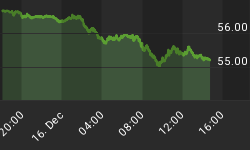Excluding fuels, U.S. import prices excluding fuels increased 0.7% in May after increases of only 0.1% in March and April. As shown in Chart 1, on a year-over-year basis, ex-fuel import prices were up 1.4% in May-- a sharp acceleration from April's 0.6% increase. Although one is always hesitant to draw conclusions from the observation of one data point, if this May datum truly does represent a trend reversal in import-price inflation, it could complicate the Fed's policy decisions going forward. A lot of our consumer goods are imported. If the price increases of these imported consumer goods are now accelerating, this will add to the faster core consumer inflation now being experienced, which, hitherto, had been primarily emanating from the core services component - everyone's favorite "owner's equivalent rent." If the Fed pauses after its credibility-enhancing June 29 rate hike and other major central banks continue raising rates, the dollar is likely to continue on its downward trend, which will exacerbate import price increases. I have always believed that "checkmate" for the Fed would be a weakening grossly-indebted U.S. economy and the inflationary impact of a sliding dollar. If the Fed ignores the dollar-induced inflation, the decline in the dollar accelerates. If the Fed raises rates in response to dollar-induced inflation, it brings down the U.S. house of credit cards. The May import price report might be the beginning of the end. And Bernanke thought the luckiestday of his life was being named Greenspan's successor!
Chart 1
High Price Of Oil Appears To Be Narrowing U.S. Trade Gap
Adjusted for prices, the U.S. trade deficit in goods troughed in January (see Chart 2). What is driving this recent narrowing in the trade gap? Primarily, petroleum. As shown in Chart 3, there has been a sharp narrowing in the U.S. price-adjusted trade deficit in petroleum products whereas the price-adjusted deficit in non-petroleum goods has continued to widen. Chart 4 shows that Katrina sharply curtailed U.S. exports petroleum products. Now that U.S. petroleum production is coming back on stream, so, exports of the products are rising again. More importantly, the higher price of petroleum products appears to be reducing the quantity demanded of imported petroleum products. I would expect that in the not too distant future the trade deficit of non-petroleum products also will start to narrow convincingly reflecting the sharp slowdown in U.S. consumer spending growth.
Chart 2
Chart 3
Chart 4
















